How to Trade Forex: A Step-by-Step Guide for Beginners
What is Forex Trading?
The foreign exchange (forex or FX) market is a global decentralized marketplace for trading currencies. It is the largest and most liquid market in the world, with over $6.6 trillion traded daily.
Forex trading involves buying and selling currency pairs based on their exchange rates. For example, you would buy the EUR/USD currency pair if you expect the euro to increase in value relative to the U.S. dollar. You would sell EUR/USD if you expect the opposite.
The aim of forex trading is to speculate on price movements of currency pairs and profit from the difference between the buying and selling prices.
Choosing a Forex Broker And Opening An Account
The first step is choosing an online forex broker to provide you with a trading platform and access to the foreign exchange markets. Consider factors like:
- Regulation: Choose a broker regulated in your jurisdiction like the FCA in the UK or CFTC and NFA in the US. This provides oversight and security for your money.
- Trading platforms: Look for an easy to use platform with charting tools, analytics, real-time news/data and mobile app options. Popular platforms include MetaTrader 4, cTrader and CQG.
- Spreads and commissions: Check the spreads, fees and leverage offered on currency pairs. Look for low, competitive spreads.

- Execution quality: Select a broker that can provide fast trade execution and price accuracy. This ensures slippage and requotes are minimized.
- Account options: Choose an account that aligns with your trading size and strategy, like a micro, standard or ECN account.
- Customer service: Ensure the broker offers reliable customer support via phone, email or live chat. This provides help when you need it.
Once you’ve chosen a broker, you’ll need to open a trading account. This involves:

- Completing an application with your personal and financial details.
- Verifying your identity by submitting documents.
- Funding your account by making a minimum deposit, deposits can be made via bank transfer, e-wallet services like PayPal or with a debit/credit card.
- Downloading the broker’s trading platform and installing it on your device or accessing the web-based platform.
Key forex terms
To start trading, it’s worth learning these basic forex terms that are used in everyday trading activities:
- Currency pair: A pair of currencies, one bought and one sold, forming the exchange rate.
- Exchange rate: The ratio at which one nation’s currency trades for another.
- Base currency: The first currency in the pair (e.g., GBP in GBPUSD) and Quote currency: The second currency in the pair (e.g., USD in GBPUSD).
- Long position (buy): Buying an asset with an expectation of a price increase and Short position (sell): Selling an asset with an expectation of a price decrease.
- Bid price: The market selling price for an asset and Ask price: The market buying price for an asset.
- Spread: The price gap between the bid and ask prices.

- Appreciation: The increase in the exchange rate value and Depreciation/Devaluation: The decrease in the exchange rate value.
- Pips: The smallest exchange rate fluctuation, quantifying profits or losses (fourth decimal point, except for yen pairs which have two).
- Lot: A trading unit, standard lot equals 100,000 base currency units. Mini and micro lots contain 10,000 and 1,000 units, respectively.
- Leverage: The use of borrowed capital to increase potential returns, up to 30 times the initial investment.
- Margin: The required deposit to sustain an open position (e.g., $5,000 for an open position of $150,000 with a leverage of 30).

- Stop loss: A tool to limit potential losses by closing a position at a specific price. However, the actual closing price might differ due to slippage.
- Take profit: A tool to lock in profits by closing a position automatically once a profit goal is reached.
Choosing a Trading Strategy
There are various trading strategies and approaches in the forex markets. As a beginner, consider these simple strategies:
Day Trading
Intraday traders, commonly known as day traders, engage in the strategic practice of initiating and finalizing a trade within the same trading day. This approach mitigates the risk associated with substantial market shifts occurring overnight. The financial outcome at the end of each trading day will result in either net gains or losses.
Intraday traders capitalize on modest profit increments over time by constantly monitoring and adjusting their currency holdings throughout the day. They rely heavily on technical analysis, utilizing tools such as the Relative Strength Index, to detect market trends and devise effective intraday trading strategies.
 Forex Scalping
Forex Scalping
High-frequency forex trading, also referred to as forex scalping, is an intense, short-term trading method. Scalpers employ a highly active intraday trading strategy, holding positions open for mere seconds to minutes before closing them. The goal is to capitalize on minute price fluctuations during peak trading hours of the day, specifically targeting major volatile currency pairs like GBP/USD.
A forex scalping strategy is suited for traders looking for numerous quick transactions, exploiting minor gains similar to day trading strategies. This approach can potentially amplify overall profits through increased transaction volume, but it is notably stress-inducing due to its intensity.
Position Trading
Long-term position trading emphasizes exploiting long-term price variations, where substantial profits can be reaped from currency price fluctuations. These enduring positions can span from weeks, months to potentially years, with a focus on the broader market panorama.
Position traders tend not to concern themselves with negligible price changes. Instead, they scrutinize weekly and monthly price charts of the market, employing technical analysis tools to predict potential future trends, around which they structure their trend trading strategy.
Technical Range Trading
Technical range traders depend heavily on technical analysis, identifying trading opportunities through detecting overbought and oversold currency pairs, often referred to as support and resistance levels.
The primary strategy involves identifying overbought currencies lacking a consistent, predictable range during overbought phases and selling them during oversold periods. Range trading encompasses several factors including stable economies, trending markets, and of course, a currency pair’s support and resistance levels.
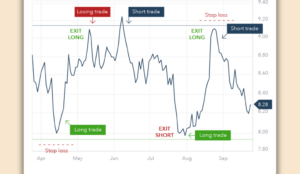
Flexible Swing Trading
Swing traders typically retain positions for a few days to several weeks, akin to position traders, they are not preoccupied with continuous price chart monitoring or insignificant market movement.
This forex trading strategy is prevalent and effective due to its flexibility to accommodate both beginners and those with other daily commitments. However, it is advised, as one of our crucial forex trading tips, to allocate a few hours each day to market analysis and evaluation for effective swing trading.
Performing Analysis with Indicators
Conduct analysis to identify trading opportunities. Key types of analysis include:
- Technical analysis: Analyse price charts using indicators and patterns to predict future movements. Common indicators are moving averages, MACD, RSI and Bollinger Bands.
- Fundamental analysis: Study economic factors like interest rates, GDP, unemployment to gauge the overall health of a country’s economy. This provides insight into currency valuation.
- Sentiment analysis: Gauge market sentiment using commitment of traders reports, financial media, and economic calendars for high-impact events.
Combining elements of technical, fundamental and sentiment analysis will help refine entry and exit points for trades. That said, many forex trader focus on technical analysis. It involves working with the following indicators:
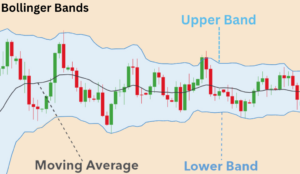 Choosing the best trading indicators depends on individual trader preferences as strategies vary according to style, personality, and psychology. However, some key indicators are essential for technical analysis.
Choosing the best trading indicators depends on individual trader preferences as strategies vary according to style, personality, and psychology. However, some key indicators are essential for technical analysis.
- Moving Averages: These leading indicators determine market trends by assessing price actions over set time frames. However, their reliance on historical data may limit their responsiveness to quick market changes.
- Oscillators: These highlight possible trend corrections, offering insight into market momentum. However, they are prone to false signals.
- Stochastics: These signify potential price reversals and overbought or oversold zones, providing clear trading signals. They do, however, sometimes generate false signals and can be less suitable for shorter trading timeframes.
- Fibonacci Retracement Lines: These aid in finding support and resistance levels, using Fibonacci ratios for target prices and stop-losses. While widely used, they involve subjective evaluation and are not grounded in mathematical logic.
- Relative Strength Index (RSI): This oscillator identifies oversold and overbought market conditions but can offer false signals, hence it’s best used as an initial evaluation tool.
- Bollinger Bands: These denote market volatility, with the width between bands indicating the degree of volatility. As they reflect past performance, they’re best used in conjunction with other indicators.
In conclusion, indicators simplify price information, provide trend signals, and more. Every trader and indicator is unique, and effective trading often involves a combination of indicators to navigate the forex markets successfully.
Placing, Managing, and Closing Trades
When you’re ready to place a forex trade, follow these steps:
- Log into your trading account and access the platform
- Search for the currency pair you want to trade in the platform
- Enter the trade size/position amount based on your account balance and risk tolerance
- Click ‘Buy’ or ‘Sell’ to execute the trade based on your analysis. This opens the position.
- Set stop loss and take profit orders to manage your trades
Once in a position, monitor open trades closely using technical analysis and updated news/data. Adjust stop losses to protect capital and close trades manually or with take profit orders once profit targets are reached. To close an open trade:
- Manually close the trade by clicking the ‘Close’ button.
- Use a stop loss or take profit order to automatically close at preset levels.
- Open an offsetting position (sell if originally bought, buy if originally sold) to net off the trade.
- Closing trades realizes your profit or loss based on the difference between the opening and closing price.
Top Tips for Beginner Traders
Forex profits and losses will be accounted for in your trading account. At the end of each month:
- Realized profits are added to your account balance.
- Realized losses are deducted from your account balance.
- Unrealized profits/losses on open trades are reflected in your account’s equity.
- Monitoring the performance of your closed trades is key to improving as a trader.
It’s recommended to first practice trading on a risk-free demo account. This allows you to gain experience without committing real capital. Opening a demo account mirrors the live account process. Once you’re ready to trade, consider the following:
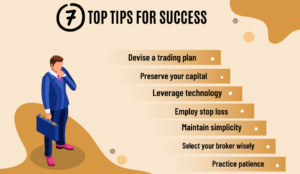
- Devise a trading plan: A winning strategy in forex trading involves creating a structured and robust trading plan. This reduces impulsive decisions and helps manage emotional stress during volatile market situations.
- Preserve your capital: Adopt defensive trading tactics and limit your risk to 2% of your account capital per trade. This approach guards against jeopardizing your account’s future due to one poor trade.
- Leverage technology: Make the most of available technology to stay efficient in the fast-paced forex environment. Utilize charting tools for pattern recognition or track news feeds and event calendars for fundamental trading.
- Employ stop loss: Consistent use of stop-loss orders shields your capital by defining your maximum loss potential before entering a trade. Especially in rapidly changing markets, a stop-loss order ensures your losses stay within acceptable limits.

- Maintain simplicity: Opt for straightforward strategies to avoid indecisiveness from information overload. Limit the markets and currency pairs you trade initially, expanding only when comfortable.
- Select your broker wisely: A reliable broker is pivotal for a smooth start. Look for credibility, favourable trading conditions, a suitable trading platform, and efficient deposit and withdrawal processes. Ensure they’re regulated by relevant authorities, such as ASIC in Australia, for security.
- Practice patience: Forex trading isn’t a quick wealth scheme; it demands patience and discipline. Remember, profit comes over time and not instantly. Begin with a demo account to familiarize yourself with the process.
Continuing Your Forex Education
There’s plenty that you can do to expand your forex education. Start by reading widely – including the top forex books and guides on analysing charts to refine your strategy. Participating in forex forums and groups to discuss the markets with other traders and consider taking online forex courses to build on your skills and knowledge.
With practice and patience, you can become an expert in forex trading. Use sound risk management and keep improving to achieve consistency and build long-term profitability.

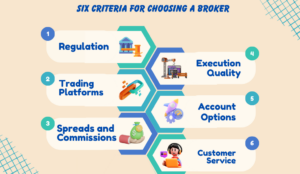
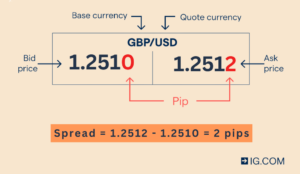
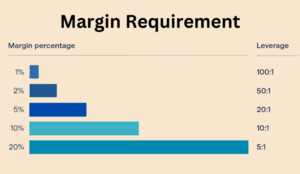
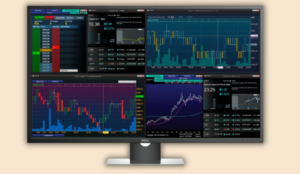 Forex Scalping
Forex Scalping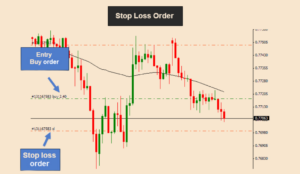
No Comments found